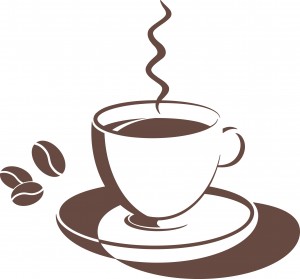Water for Coffee
by Hardly Waite
The Pure Water Gazette has already devoted more than a sensible number of words to the subject of the nature of perfect water for making coffee. See, for example, What kind of water makes the best tasting coffee? and What is the ideal water for brewing coffee? But since there is always room for another opinion, here is more advice on coffee brewing, this from Axeon Water’s website. Axeon is a major supplier of water treatment equipment, especially known for its large reverse osmosis units. The article is called Getting more out of your coffee.
Americans’ love of coffee dates back to the Boston Tea Party in 1773 when the colonists boycotted tea. The colonists united and vowed to only serve coffee in their homes. Ever since, the American taste for coffee has continued to grow.
Most attention of course is given to the type of coffee bean and where it is grown. After all it is the coffee bean that provides the caffeine. Yet the coffee bean alone does not constitute the flavor of coffee. Remember better than 98% of coffee is water. Water is the solvent responsible for leaching all those flavors and oils out of the coffee bean and into the coffee drink.
Drinking water from the tap contains varying amounts of total dissolved solids (TDS). TDS is composed of a variety of salts and minerals such as sodium chloride (table salt) and hardness (calcium and magnesium). Without controlling the consistency of the TDS, the coffee can swing from very bitter to weak. Too low TDS will result in a very bitter taste while high of TDS will result in a weak taste due to less than sufficient extraction of the coffee bean organics. Generally speaking, 150 ppm is often considered the target TDS level.
The individual salts and minerals of the TDS can affect the flavor of coffee. Chlorides will impart a sweet taste; however, at higher levels the taste turns sour. Sulfates on the other hand accentuate the bitterness. Softening the water by removing the hardness is not necessarily the ideal. Hardness (such as calcium and magnesium) is actually preferable for extracting the organic flavor from the coffee bean. Without the proper amount of mineral hardness, the coffee will be very bitter.
Municipal tap water also contains either chlorine or chloramines as a method of disinfecting the water supply. Chlorine and chloramine alters the taste by imparting medicinal odors.
To perfect the taste of coffee, coffee shops often turn to reverse osmosis filtration to design a water profile that best suits the extraction of flavor from the coffee bean. Brewers opt to blend the permeate water from the reverse osmosis with pretreated water that is bypassed around the reverse osmosis unit. Changing the ratio of this blend allows the coffee brewer the flexibility to modify the total dissolved minerals in the water as needed.
To clarify, what they are suggesting as the way to manufacture perfect water for coffee is to treat the water by reverse osmosis. This will normally produce water that is way below the ideal 150 ppm Total Dissolved Solids. To bump the TDS to 150, the product water from the RO unit (permeate) is blended with filtered tap water to arrive at water with the correct dissolved solids level but with chlorine or chloramines removed. This may prove to be way too much trouble for home coffee brewers, but restaurants might go to the trouble to assure a perfect product. In practical terms, if your local tap water is naturally in the 150 range, you would want to filter it with a good carbon filter (but not reverse osmosis) to remove the disinfectants and other taste/odor issues and use it as it is. For example, our local tap water comes from a lake and is usually around 180 ppm dissolved solids. That’s close enough.





